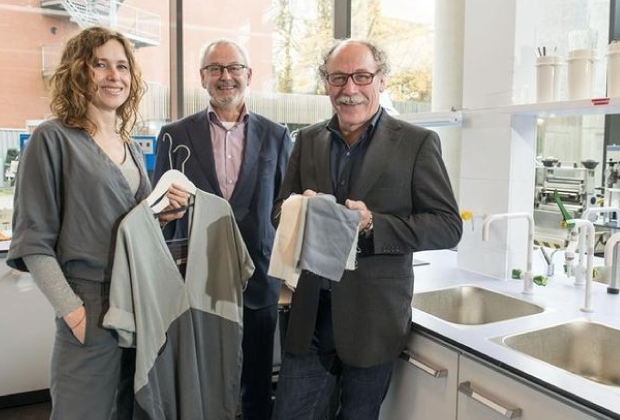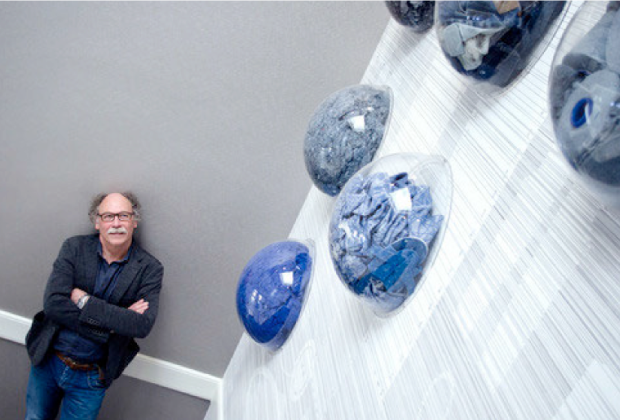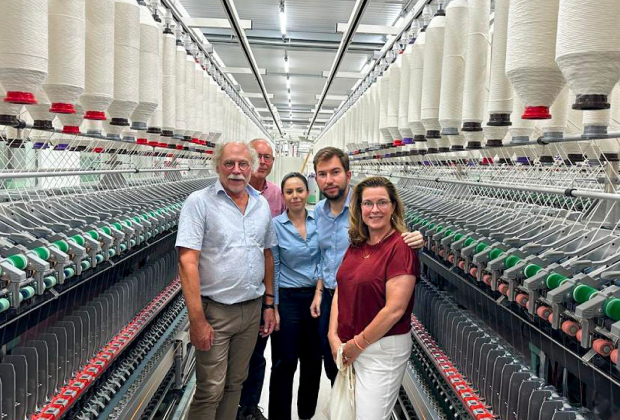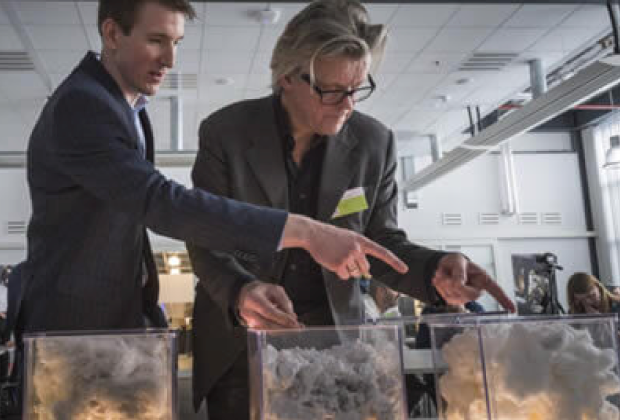History
SaXcell’s journey started back in 2011 when a team of researchers
from Saxion University of Applied Science in Enschede (NL) created the SaXcell project.
2011Idea first trials
The researchers were deeply concerned with the enormous volumes of textile waste across the globe causing huge environmental problems. What if textile waste can be used to make new fibers which in turn can be used to make new textiles? The ideas for a recycling process -breaking down the molecules of the used textiles- were tested in Saxion’s laboratory.

2012Proof of principle
2015Founding SaXcell BV
Gerrit Bouwhuis, Ger Brinks, Henk Gooijer (†), Pramod Agrawal and Jens Oelerich- supported by Saxion University founded the start-up company SaXcell BV to further develop the recycling technology for commercial use. SaXcell used textile waste to produce the first batch of 50 kg of SaXell fibers. The fibers were used to produce a non-blended fabric used for making garments worn by some key speakers at a sustainability conference in October 2015.

2016Spinning of SaXcell at rieter
2017From laboratory to production
Within the TechForFuture (TFF) project ‘Upscaling of Cotton Recycling’ SaXcell researchers produced 90 kg of SaXcell fibers. The successful results were presented in March 2017.

2017Spinning and weaving SaXcell in Denizli Turkey
2019 Regiodeal circular textile twente (NL)
As part of a publicly funded project ‘Regiodeal Circulair Textiel Twente’ Saxion University started setting up a new laboratory in The Netherlands. SaXcell was allowed to use the laboratory for -amongst others- testing SaXcell’s feedstock and pulp.

2020Starting a pilot production facility
2022-2024Design of production facility in NL
Based on the learnings of the pilot production phase the SaXcell team radically changed the process of making pulp. The new technology is at the heart of the new design for a production facility in NL (750 tons/year)
and the design of a Pulp Development Center. A new location for the production facility was secured in Enschede (NL).
A significant EU-contribution -the Regio Green Tex project (2022-2025)- helped financing the design and engineering of the production facility.
